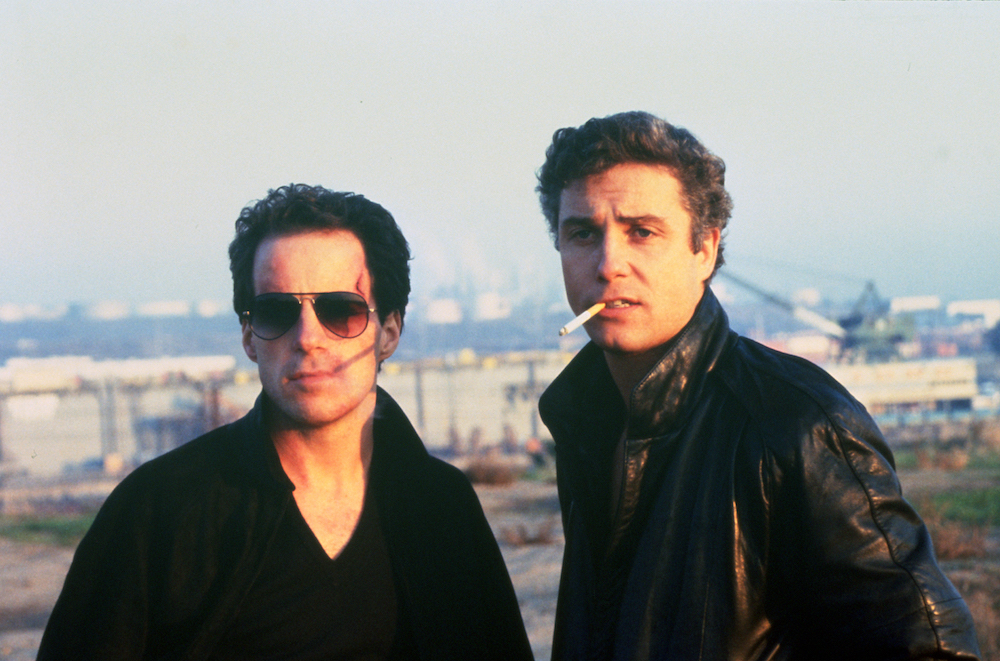Verdict
Summary
To Live and Die in L.A. is a fantastic police thriller, and arguably one of the best action films ever made. But it is not a story of redemption. It is about things going wrong and somewhere along the line, someone has to pay. This is not a film where the characters are shades of grey, nor are they black or white. They all start out dark and only get darker.
Plot: Richard Chance (William Petersen) and Jimmy Hart are United States Secret Service agents assigned as counterfeiting investigators in its Los Angeles field office. Chance has a reputation for reckless behavior, while Hart is three days away from retirement. Alone, Hart stakes out a warehouse in the desert thought to be a print house of counterfeiter Rick Masters (Willem Dafoe). After Masters and his bodyguard, kill Hart, Chance explains to his new partner, John Vukovich (John Pankow), that he will take Masters down no matter what.
Review: Director William Friedkin is a bit of a Hollywood legend. Having directed films such as The French Connection (for which he won the Academy Award for Best Director), The Exorcist, and Rampage, his greatest achievement may still be 1985’s To Live and Die in L.A.
Based on the novel by former U.S. Secret Service agent Gerald Petievich, who co-wrote the screenplay with Friedkin, it is a high energy film noir tale of corruption and desperation. The entire vibe of the film is glitzy but hollow. Even when we are presented with Ferrari’s, models and luxurious locales, you cannot help but feel empty. The accompanying soundtrack provided by Wang Chung is a major departure from their pop sound and really stands out with its experimental style.
This film also marks the first leading role for Petersen who went on to do another gritty police role in Michael Mann’s 1987 film Manhunter. I would strongly suggest to anyone who only knows Petersen for his role as Gil Grissom on C.S.I., to see just what a pure electric force he can be when the role calls for it (Watch for his running scenes in the airport). His character Chance is a jerk. He blackmails informants for information and sex. He steals evidence from the crime scene and treats his partner like dirt. He is an unlikable character and yet we are totally behind him.
Petersen’s steely energy runs contrary to Dafoe’s relaxed manner which gives us a film that smolders before it finally explodes.
John Turturro in one of his earliest roles is great as one of Masters’ money laundering lackeys and the only source of what little levity this movie has.
This film also has one of the greatest car chase scenes in movie history. Having already set that bar pretty high with the chase in The French Connection, Friedkin has our hero pushing his car to the limit, careening in and out of countless tight spots in pursuit of his target, culminating with Petersen driving his Chevy Impala the wrong way along the highway during rush hour traffic, making this scene not only thrilling, but genuinely scary as well. All done well before the CGI of today, this particular sequence took six weeks to shoot.
Unfortunately not having seen this in the theatre when it was released, I can only imagine the gasps from the audience as the movie neared its conclusion. Friedkin firmly grabs the rug and pulls it out from under us. There are surprise endings, twist endings, and happy endings. This my friends is none of those. This is a sledgehammer to the gut ending.
To Live and Die in L.A. is a fantastic police thriller, and arguably one of the best action films ever made. But it is not a story of redemption. It is about things going wrong and somewhere along the line, someone has to pay. This is not a film where the characters are shades of grey, nor are they black or white. They all start out dark and only get darker.




